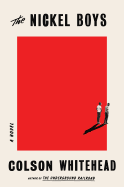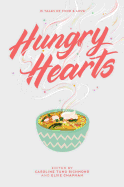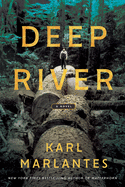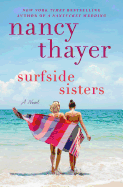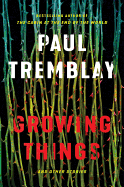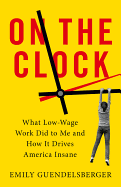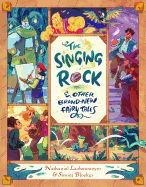Tuesday, July 16, 2019
 Jane Austen's novels have long captured the imaginations of modern readers; television and movie adaptations abound, and Austen-inspired stories are easy to come across. Of late, there have been several inventive and out-of-the-box retellings of Pride and Prejudice (Harper Perennial, $10), in particular, worth noting for the avid Austen reader looking for a new take on one of Austen's best-loved novels.
Jane Austen's novels have long captured the imaginations of modern readers; television and movie adaptations abound, and Austen-inspired stories are easy to come across. Of late, there have been several inventive and out-of-the-box retellings of Pride and Prejudice (Harper Perennial, $10), in particular, worth noting for the avid Austen reader looking for a new take on one of Austen's best-loved novels.
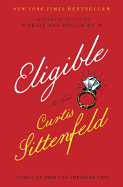 Curtis Sittenfield's debut novel, Prep (Random House, $17), marked her as a writer to follow; her subsequent novels, including Eligible, have carried that reputation forward. In Eligible (Random House, $17), Austen's characters are moved out of 19th-century England and into 21st-century Cincinnati, Ohio.
Curtis Sittenfield's debut novel, Prep (Random House, $17), marked her as a writer to follow; her subsequent novels, including Eligible, have carried that reputation forward. In Eligible (Random House, $17), Austen's characters are moved out of 19th-century England and into 21st-century Cincinnati, Ohio.
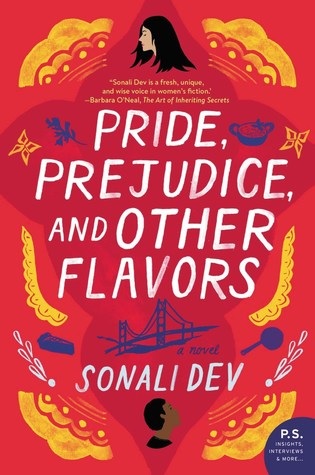 In Pride, Prejudice, and Other Flavors (Morrow, $15.99), Sonali Dev also reimagines the classic story in contemporary times--this time in a family drama featuring an immigrant Indian family in modern-day San Francisco, Calif.
In Pride, Prejudice, and Other Flavors (Morrow, $15.99), Sonali Dev also reimagines the classic story in contemporary times--this time in a family drama featuring an immigrant Indian family in modern-day San Francisco, Calif.
Soniah Kamal's Unmarriageable (Ballantine Books, $27) reimagines the large Bennett family as the Binat clan of present-day Pakistan. The Bennetts are once again reinvented, as the Benitez family, in Ibi Zoboi's Pride (Balzer & Bray, $17.99), set in the rapidly changing neighborhood of Bushwick in Brooklyn, N.Y.
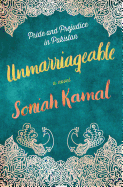 Each of these modern-day retellings take inspiration from Austen's classic tale despite vastly different characters and settings, all while maintaining Austen's characteristic wit and satire. More impressively, however, they replicate the biting social observations and criticisms for which Austen is still so beloved. Turns out Austen's study of gender roles, societal expectations, familial duty (and its corresponding conflicts), class and social mobility are just as present in modern times as they were when Austen was writing.
Each of these modern-day retellings take inspiration from Austen's classic tale despite vastly different characters and settings, all while maintaining Austen's characteristic wit and satire. More impressively, however, they replicate the biting social observations and criticisms for which Austen is still so beloved. Turns out Austen's study of gender roles, societal expectations, familial duty (and its corresponding conflicts), class and social mobility are just as present in modern times as they were when Austen was writing.
The Nickel Boys
by Colson Whitehead
The Nickel Boys forgoes the fantastical touches of Colson Whitehead's previous book, the Pulitzer Prize-winning novel The Underground Railroad, for a no-less-harrowing account of a vicious reform school in the Jim Crow-era South.
Whitehead's protagonist is Elwood Curtis, a black boy living in Tallahassee, Fla., in the early 1960s. Elwood is something of an idealist, listening repeatedly to a recording of Martin Luther King Jr.'s speeches and taking to heart his moral vision. Elwood clings to this code even when it is repaid by cruel trickery and, eventually, an encounter with police that cuts short his promising future and sends him to the Nickel Academy.
The Nickel Academy falls far short of its billing as a "reform school." In reality, the students are underfed, segregated and viciously beaten. Some students fare even worse.
At the heart of The Nickel Boys lies the question of how best to respond to the evils of the world. Whitehead shows how difficult it is to put Martin Luther King Jr.'s self-sacrificing ideals into practice, to remain optimistic in the face of bottomless violence and cruelty. Elwood is challenged by fellow student Turner, for whom the problem lies deeper than surface-level inequality: "You can change the law but you can't change people and how they treat each other... the way Turner saw it, wickedness went deeper than skin color.... It was people." Long after students leave the reform school, the Nickel Academy's lessons seem almost impossible to unlearn. Elwood may be naïve, but his convictions give him strength. --Hank Stephenson, bookseller, Flyleaf Books, Chapel Hill, N.C.
Discover: The Nickel Boys is an account of black boys struggling to survive a vicious reform school in the early 1960s.
Deep River
by Karl Marlantes
In this sweeping saga set against early-1900s Finland, occupied and oppressed by Tsarist Russia, and the untamed old-growth forests of the Pacific Northwest, Karl Marlantes (Matterhorn, What It Is Like to Go to War) tells the story of the Koski siblings as they leave their homeland for a raw, new place on the other side of the world.
Fleeing political persecution, 17-year-old Aino joins her brothers on Deep River, just north of the mighty Columbia. What greets her is an unimaginable world of 300-foot trees, a logging frontier that is rough, lush and buzzing with the promise of progress. As her brothers settle into their own rhythm--Ilmari at his farm and Matti as a logger--Aino returns to her socialist roots, working to unionize the big logging camps. The labor movement is in its infancy in the United States, and Aino's passionate mission to bring socialism through the IWW takes her across southern Washington as she gives speeches and organizes rallies, leaving little time for her personal life. As each character faces love, loss, devastation, transformation and redemption--Aino most of all--she must ask: "The cause was worthy--but was it worth it?"
Based in part on his own family history and influenced by the epic Finnish poem The Kalevala, Marlantes depicts the depths of Finnish endurance (Sisu) in a time of hardship and great change. Spanning the years from 1893 to 1932, Deep River is a vast account of the logging, fishing and farming industries and the immigrants and Americans who brought them to life. It is fantastic historical fiction full of impassioned characters working hard to put down roots in a constantly developing world. --Jennifer Oleinik, freelance writer and editor
Discover: This epic family saga follows three Finnish immigrant siblings in turn-of-the-century Pacific Northwest logging country as the world around them is in flux.
Surfside Sisters
by Nancy Thayer
Keely Green and Isabelle Maxwell have been best friends since preschool. They've grown up together on Nantucket, sharing idyllic times at their favorite beach, Surfside, and riding their bikes all over the island. However, Keely, the only child of working-class parents, has always been a tiny bit jealous of Isabelle's much more luxurious life. The Maxwell family has a huge house and spends every summer in Europe; most importantly, in Keely's eyes, Isabelle has a handsome, wonderful older brother named Sebastian.
For years Keely tries to tamp down her infatuation with Sebastian, and focuses on her friendship with Isabelle. They both decide that they want to be writers when they grow up, which creates an extra bond between them. But then, in high school, the boy that Isabelle loves asks Keely to homecoming. A few years later, Keely is forced to drop out of college, while Isabelle continues living her charmed life. This creates deep tension between the two, and Keely must carefully navigate both her changing world and her complicated friendship with Isabelle.
Nancy Thayer (A Nantucket Wedding, Secrets in Summer) knows how to create the perfect beach read. A heady mix of summer, family secrets, first love and friendship, Surfside Sisters is meant to be devoured on a lazy afternoon. Readers who love Elin Hilderbrand or Jamie Brenner will be delighted by Surfside Sisters, with its familiar island routines and its eclectic, book-loving characters. --Jessica Howard, bookseller at Bookmans, Tucson, Ariz.
Discover: In this charming beach read set on the island of Nantucket, two best friends navigate first loves and jealousies.
Mystery & Thriller
Growing Things and Other Stories
by Paul Tremblay
Of the recent horror writers to have made their mark, Paul Tremblay belongs the most to a tradition of psychological terror. Stories in Growing Things such as "Something About Birds" and "Notes from 'The Barn in the Wild' " have themes of cosmic horror, but his best work derives its power from the ordinary and domestic gone mysteriously wrong. Two other stories connect directly to Tremblay's earlier novel A Head Full of Ghosts, a wrenching tragedy that left what happened to the central character ambiguous. Throughout this collection, the reader is forced to make their own shuddering conclusions as to why, for instance, in "-------," a family man meets a woman acting as if she's his longtime wife and his children seem to agree.
Like fellow New England writer Shirley Jackson, Tremblay is a master of delving so deep into a psyche that a reader longs to come up for air. Yet he's also surprisingly playful about his own reputation and the milieu of horror fiction (as in the blackly funny "Notes from the Dog Walkers"), and restless in his experimentation with form. Growing Things is not Tremblay's magnum opus but a stepping stone to one. Here are 19 stories without boundaries, elegantly crafted and written to speak to the deepest fears and strangest obsessions. And all they ask in return is to enter the reader's dreams, to be thought of with a twinge of anxiety. The only warning one can give is: buyer beware. --C.M. Crockford, freelance reviewer
Discover: Horror writer Paul Tremblay's collection of stories is terrifying, experimental and remarkably vulnerable.
Romance
Window on the Bay
by Debbie Macomber
Two Seattle friends--divorcées--are faced with empty nest syndrome in Debbie Macomber's Window on the Bay.
Jenna and Maureen met as college freshman while taking a French class and became best friends. They vowed that after graduation, they would take a trip to Paris where they would "walk in the moonlight along the Seine, tour the Louvre, and see the view of the city from the Eiffel Tower." Maureen's unplanned pregnancy, however, forced the friends to defer their plans to "someday."
Over the years, Jenna, an ICU nurse, and Maureen, a librarian, married, had children and divorced. Throughout 20 years of ups and downs, the two single moms emotionally supported each other. Now middle-aged--with their children grown and launched--Jenna and Maureen decide "someday" is now. Paris awaits. That is, until Jenna's mother has an accident that brings an attractive male surgeon into Jenna's life. Meanwhile, Maureen catches the attention of a book-loving plumber who, working near the library, starts paying Maureen visits in search of new reading material. The two women, bruised by the past, are leery, but soon become lured by the prospects of new love. But what about Paris?
Macomber (Cottage by the Sea, If Not for You) unspools several tender, romantic story threads. Through a refreshing role-reversal, the young adult offspring of each woman--with complications in their own lives--prove sources of unexpected wisdom to their mothers on the brink of change. --Kathleen Gerard, blogger at Reading Between the Lines
Discover: Two middle-aged divorcées--friends since college--find their plans to visit Paris complicated by familial demands and the prospects of new love.
Graphic Books
Hot Comb
by Ebony Flowers
In chunky lines and charmingly chaotic frames, debut author Ebony Flowers uses the comic format to explore the vital and myriad ways that the experience of young black women is tied to their relationship with their hair. Across the eight short stories that make up Hot Comb, Flowers illustrates the profusion of cultural forces young black girls must contend with: peer pressure, white beauty standards, well-meaning strangers, not-so-well-meaning strangers and, perhaps most interestingly, advertisements. Throughout, Flowers makes clear the ways in which the success of the black hair industry depends on the malleability of adolescent self-image and thrives on the insecurities of black children and teenagers. In recognition of this, Flowers ends each story with a powerful editorial insertion: a brand-new advertisement that draws from distinctly black cultural imagery to celebrate black hair as it is.
In Hot Comb, black hair proves to be a rich symbol for interpreting the insidious politics of race and class that play out each day in the lives of black Americans. Flowers's stories do not attempt to mask the harshness of poverty and racism, and they do not romanticize hardship. What Hot Comb does instead is celebrate the devotion of black mothers, the creativity of black children and the ingenuity inherent in the black experience. This is a deeply impressive debut and belongs on the bookshelf between Lynda Barry and Claudia Rankine. Ebony Flowers is a cartoonist to watch. --Emma Levy, publishing assistant, Shelf Awareness
Discover: Ebony Flowers pushes the bounds of the comic form in this intimate and poignant portrait of black womanhood.
Political Science
Proud Boys and the White Ethnostate: How the Alt-Right Is Warping the American Imagination
by Alexandra Minna Stern
Alexandra Minna Stern (Eugenic Nation) meets the rising wave of white nationalism head-on in her important and timely work, Proud Boys and the White Ethnostate: How the Alt-Right Is Warping the American Imagination.
Stern, American Culture and History professor at the University of Michigan, dispenses with any pretense of neutrality in her reportage, instead referring to herself as a "scholar-activist." She sets out to understand the intellectual underpinnings of the so-called alt-right movement so that it may be better confronted and dismantled. What she finds in this detailed and telling work is a group of disaffected white men desperate to re-establish white male power, epitomized by the idea of a segregated white homeland, or "ethnostate." She follows these men's interactions in online chat rooms and popular media, both in the U.S. and Europe, and discovers what unites them: antipathy toward multiculturalism, feminism and immigration. She finds a movement once confined to the shadows and associated with neo-Nazism now seeking mainstream approval for its racist and xenophobic ideas.
Stern uncovers so many disturbing things about the alt-right movement that it's hard to focus on one. For example, white nationalists have appropriated left-wing environmentalist ideas like green sustainability and bio-community for their white utopian dreams. Some even back reparations for African-Americans, envisioning a separate black homeland in the South. Stern analyzes these different threads of supremacy and separatism, all based on what she deems "racial nationalism." The most disturbing aspect of Proud Boys and the White Ethnostate is the validation the alt-right has received from President Donald Trump. Stern makes a strong case that the president's rhetoric and policies on immigration stem from the same racial nationalism.
Proud Boys and the White Ethnostate is an important volume for anyone interested in the future of liberal democracy. Stern has fashioned an invaluable guide with which to unmask a new breed of racism. --Scott Neuffer, writer, poet, editor of trampset
Discover: The myths and pernicious beliefs of white nationalism are laid bare in this mix of exposé and cultural criticism.
Social Science
On the Clock: What Low-Wage Work Did to Me and How It Drives America Insane
by Emily Guendelsberger
On the Clock is a study of modern service work as told through the author's experience working in an Amazon fulfillment center, a Convergys call center and a busy McDonald's. In a voice that is as down-to-earth as it is scholarly, journalist Emily Guendelsberger combines her experience at these service jobs with citations from primary and secondary sources to form a narrative that is both educational and entertaining.
Guendelsberger explores the science and consequences of repetitive physical and emotional stress, delving into increasing worker productivity demands, beginning in the late 1800s and continuing through Ford's assembly lines all the way to today's timed bathroom breaks, call time targets and required greeting of every customer within four seconds.
Rather than serving as an indictment of these three companies, On the Clock uses their practices as examples of the service industry at large. Workers across the sector are dehumanized to the point of being expected not to have bodily functions, emotions or any of the things that make us human.
Guendelsberger begins the book with a tale of two worlds, as defined by their understanding of the phrase "in the weeds." Service workers recognize this as when they are swamped with work, demand outpacing their capacity to meet it. In white-collar jobs, it's defined as being bogged down in the details. Guendelsberger's book seeks to ensure that the workers themselves aren't seen as the details. --Suzanne Krohn, editor, Love in Panels
Discover: With humor and wit, On the Clock delivers history, modern context and real-life stories to anyone wondering why modern workers are so stressed and dissatisfied.
Health & Medicine
Everything Below the Waist: Why Health Care Needs a Feminist Revolution
by Jennifer Block
In her well-received first book, Pushed: The Painful Truth About Childbirth and Modern Maternity Care, feminist journalist Jennifer Block exposed the concerning aspects of maternity care in the United States. With Everything Below the Waist, she sounds an alarm about the condition of women's health care in America, where women run greater risks of reproductive system surgery than in any other developed nation. Partly supported by a Whiting Creative Nonfiction Grant, Block's chilling exposé unveils a broken medical system and the patients who suffer its inadequacies and abuses.
Block delves deeply into the history of women's reproductive health and its practitioners, contrasting her findings against interviews with modern practitioners, researchers, nonprofit service providers and feminist thinkers. The emergent picture is one evocative of a science-fiction dystopia, a world where medicine ignores the basic fundamentals of female biology while seeking to control and shape it into a more convenient package. Women take hormonal birth control without full understanding of the poorly disclosed risks and side effects, while corporations offer egg-freezing parties to help their female employees put off parenthood. Years later, would-be mothers face painful fertility treatments with no guarantee of success.
Decrying a system that encourages women to sacrifice their most fertile years, Block laments, "We are running a race designed by and for men and literally taking steroids to compete." Everything Below the Waist is a call to action, insisting "[w]e need clinicians who focus less on controlling women's fertility and more on enhancing our health." Women of childbearing age in particular should not skip this important and well-researched analysis of a field that holds their lives in its hands. --Jaclyn Fulwood, blogger at Infinite Reads
Discover: Feminist journalist Jennifer Block received a Whiting Creative Nonfiction Grant to complete this jaw-dropping investigation into the women's health industry.
Travel Literature
Escalante's Dream: On the Trail of the Spanish Discovery of the Southwest
by David Roberts
In Escalante's Dream: On the Trail of the Spanish Discovery of the Southwest, adventure writer David Roberts (Limits of the Known) takes the reader on a journey that is part road trip, part historical exploration and part love story.
In 1776, two Franciscan friars, Francisco Atansio Domínguez and Silvestre Vélez de Escalante, led an expedition across the Southwest in search of a land route from Santa Fe to the new mission at Monterey. In 2017, Roberts and his wife, Sharon, re-created their journey, guided by Escalante's firsthand account and the report of "exploratory rediscovery" created for the expedition's bicentenary in 1976.
Frustration is the dominant emotion for much of Escalante's Dream. Roberts wrestles with the inadequacies of Escalante's account as a travel guide, the bicentennial report's lack of academic rigor and the absence of historical markers commemorating the expedition's travels through the Southwest. He worries over his inability to like, or even understand, the men whose footsteps he follows.
Roberts also struggles with new physical limitations, the result of a two-year battle with throat cancer. He opens the book with the admission that this six-week journey is both tame, compared to the adventures that defined much of his adult life, and the most extreme challenge he is now able to face.
By the book's close, frustration is replaced by appreciation both for the friars themselves and for the value of this "tame" adventure in the company of his wife, "the best thing we had ever done together." --Pamela Toler, blogging at History in the Margins
Discover: Adventure writer David Roberts struggles to follow the forgotten trail of "the Spanish Lewis and Clark" across the Southwest.
Children's & Young Adult
Hungry Hearts: 13 Tales of Food & Love
by Elsie Chapman and Caroline Tung Richmond, editors
In Elsie Chapman (A Thousand Beginnings and Endings) and Caroline T. Richmond's (The Darkest Hour) Hungry Hearts, 13 stories of how people show "love through food" unfold and intertwine in the neighborhood of Hungry Heart Row. Featuring tales told from diverse points of view that discuss loss, love, family and how food can bring people of all cultures together, this collection of connected short stories combines a number of different genres--fantasy, crime, mystery, magical realism, romance--to create a vibrant neighborhood and a vivid tapestry of experiences.
Hungry Hearts is filled to the brim with delightful surprises and deep familial bonds. In Karuna Riazi's "Hearts à la Carte," a mysterious boy falls from the sky "as harshly... and roughly... as a shooting star" and befriends Munira, a young woman who keeps desperately hoping adventure will find her. The spirit of a dead parent is brought back to life by the cooking of their favorite dish in Sangu Mandanna's "Rain." And "Panadería Pastelería" by Anna-Marie McLemore tells the enchanting story of a girl named Lila who has the magical ability to find and make pastries for those who need them most. Blended together, this baker's dozen of stories creates a multilayered and diverse neighborhood, its community brought together through their experiences with grief, love, intrigue, family and, of course, food. Each author creates an atmosphere that pulls at the heartstrings, the collection leaving a delightfully bittersweet taste in readers' mouths. --Tasneem Daud, blogger and booktuber, Nemo Reads
Discover: Hungry Hearts is a delicious YA collection of overlapping short stories exploring the ways in which food can bring people together.
The Singing Rock & Other Brand-New Fairy Tales
by Nathaniel Lachenmeyer, illus. by Simini Blocker
In his first graphic novel for children, writer Nathaniel Lachenmeyer (Octopus Escapes) offers four original, offbeat fairy tales, whimsically illustrated by artist Simini Blocker (My So-Called Superpowers).
In "Hip Hop Wish," a riff on The Arabian Nights, a carefree frog accidentally hops onto a magic lamp. The fiery orange-and-yellow genie who emerges finds granting wishes difficult since his amphibious summoner has none. A traveling minstrel with far more motivation than talent bedevils a grumpy witch who hates music and claims a hilarious (if unconventional) victory in "The Singing Rock." "The Sorcerer's New Pet" follows a jealous sorcerer who attempts to steal his humble but clever rival's spells with amusingly disastrous results. Finally, in "Ogreish Art," an artist grows rich painting flattering but dishonest portraits of royals only to learn, when hired by Rog, King of the Ogres, that beauty is in the eye of the beholder.
Lachenmeyer demonstrates a thorough understanding of folktale anatomy, layering tropes in unexpected combinations that nonetheless make each story feel like a rediscovered classic with a slyly delivered moral. The digital illustrations marry the magical and the pastoral as Blocker's broad palette of rich jewel tones and delicate pastels takes readers into the cool blue of the ogres' caverns, lush green woods and sunrise-skied hamlets. Her gift for capturing nuanced facial expressions extends not only to the human cast but to the many animal characters. This lighthearted collection should delight pre-readers from preschool on, and independent readers through fifth grade. --Jaclyn Fulwood, youth services manager at Main Branch, Dayton Metro Library
Discover: In this graphic novel for young readers, four original fairy tales feel like rediscovered classics with a sly twist.
| Advertisement Meet belle bear! |


